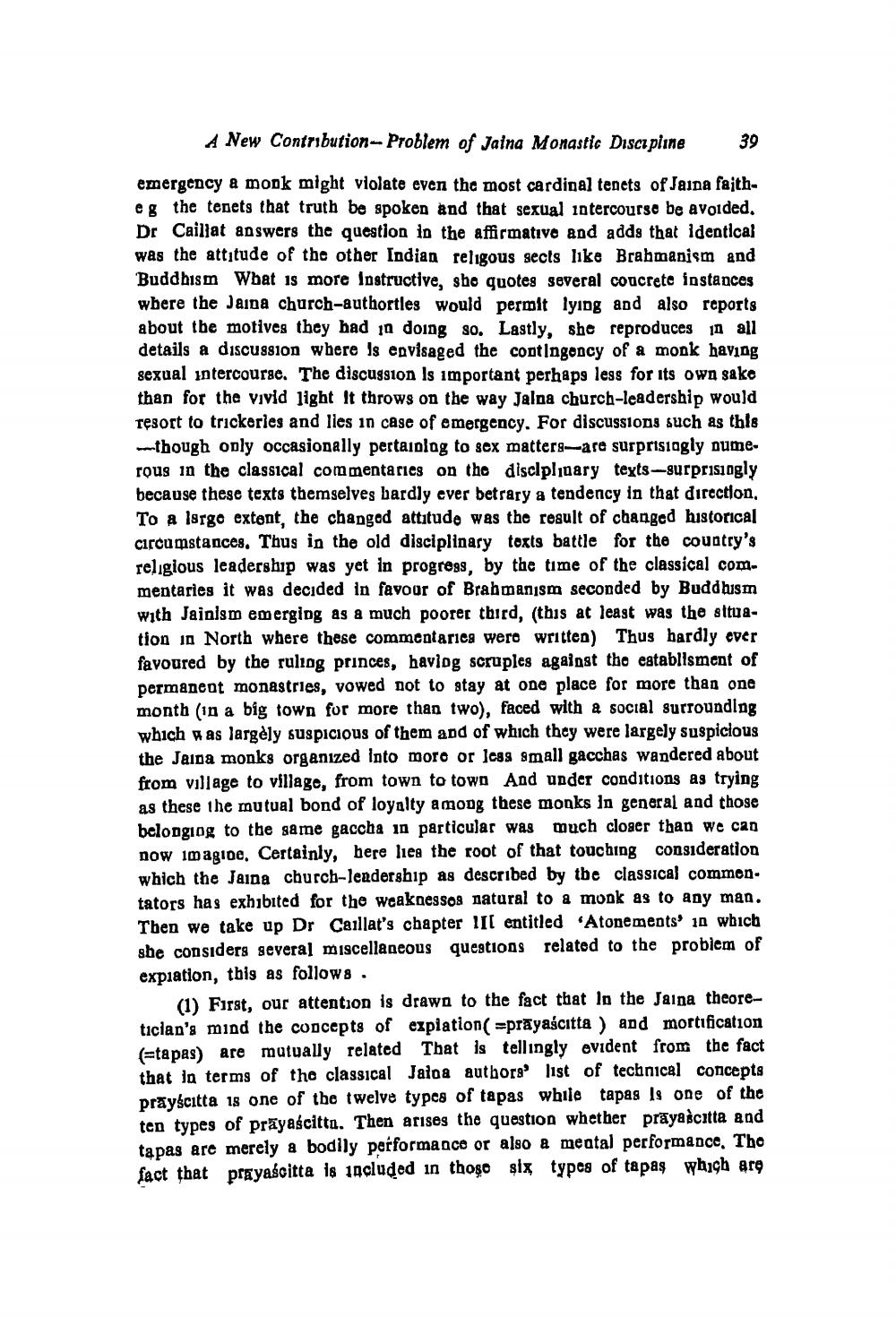________________
A New Contribution- Problem of Jaina Monastic Discipline 39 emergency a monk might violate even the most cardinal tenets of Jaina faitheg the tenets that truth be spoken and that sexual intercourse be avoided, Dr Caillat answers the question in the affirmative and adds that identical was the attitude of the other Indian religous secls like Brahmanism and Buddhism What is more Instructive, she quotes several concrete instances where the Jaina church-authorties would permit lying and also reports about the motives they had in doing so. Lastly, she reproduces in all details a discussion where Is envisaged the contingoncy of a monk having sexual intercourse. The discussion is important perhaps less for its own sake than for the vivid light It throws on the way Jalna church-leadership would resort to trickerles and lies in case of emergency. For discussions such as this
though only occasionally pertaidlag to sex matters-are surprisiagly numerous in the classical commentaries on the disciplinary texts-surprisingly because these texts themselves bardly ever betrary a tendency in that direction, To a Isrgo extent, the changed attitude was the result of changed historical circumstances. Thus in the old disciplinary texts battle for the country's religious leadership was yet in progress, by the time of the classical commentaries it was decided in favour of Brahmanism seconded by Buddhism with Jainism emerging as a much poorer third, (this at least was the sttuation in North where these commentarica were written) Thus hardly ever favoured by the ruliog princes, haviog scruples against the establisment of permanent monastries, vowed not to stay at one place for more than one month (in a big town for more than two), faced with a social surrounding which was largely suspicious of them and of which they were largely suspicious the Jaina monks organized into more or less small gacchas wandered about from village to village, from town to town And under conditions as trying as these the mutual bond of loyalty among these monks in general and those belongiog to the same gaccha in particular was much closer than we can now imagine. Certainly, here lies the root of that touching consideration which the Jaina church-leadership as described by the classical common. tators has exhibited for the weaknessos natural to a monk as to any man. Then we take up Dr Caillat's chapter 1Il entitled 'Atonements' in wbich she considers several miscellaneous questions related to the problem of expiation, this as follows .
(1) First, our attention is drawn to the fact that lo the Jaina theoretician's mind the concepts of expiation( =prayascitta ) and mortification (tapas) are mutually related That is tellingly evident from the fact that la terms of the classical Jaloa authors' list of technical concepts prayscitta is one of the twelve types of tapas while tapas Is one of the ten types of prāyaścitta. Then arises the question whether prāyaìcitta and tapas are merely a bodily performance or also a meatal performance. The fact that prayascitta is 19cluded in thoso six types of tapas which are




